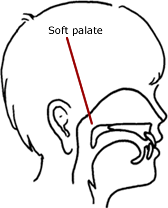Sunday, 18 May 2014
The Finishing Line
.jpeg) |
| Dorando Pietri - Stumbles over the line first in the 1908 Olympic Marathon then disqualified as he received help !! |
I set out to write 22 pieces in 22 days and have finally made it. I must admit I didn't appreciate what I had taken on and after the first couple of days I wasn't too sure if I would stay the course. In fact as time passed I thought of more and more things to write about and blogging has become quite addictive.
As my friend Mike Woods http://rulesfoolsandwisemen.blogspot.co.uk/ explained to me some time ago you write articles because you want to write them and say to yourself that it doesn't really matter if no-one reads them but in the end the fact that someone is reading them it is very important.
Personally I have been overwhelmed by the response which just goes to show the power of social media in sharing information. At the time I am writing this piece the blog has received over 3,700 page views from more than 10 countries including UK, USA, Ireland, Australia, Canada, Serbia and Germany.
Thank you to everyone who has read this blog, I have had lots of positive comments, you have very kindly kept the negative ones to yourselves! The fact that I know people have been reading and commenting has kept me going even though it has involved quite a bit of "burning the midnight oil". I have enjoyed putting these articles together finding the images and probably breaching copyrights at the same time! However I have always tried to give proper acknowledgement to my sources and apologise if I have missed any.
I hope that the posts have been interesting, educational and entertaining even if in some of them the link with 22q has been a little tenuous. If I have offended anyone sorry, if any information is misleading or incorrect then it is purely unintentional.
How would I sum up the 22q journey so far.
The negatives have been the trauma of the initial diagnosis, the medical procedures, illnesses and the ongoing effort to get the support that Sarah needs. We are about to embark on the next review of her Statement of Special Educational Needs and one benefit of this blog is that it has helped me to get my thoughts in order for the parents report that we need to draft. There is also the uncertainty as to what challenges Sarah will face in the future and how she will be able to cope with them.
On the positive side we have a daughter who is good fun to be with (most of the time!) with a pleasant personality who tries hard to overcome the challenges of 22q. She loves films, theatre and writing stories but hates maths! (no surprises there). Her current obsession is the Disney film Frozen and will spend hours looking at the make up tutorials on YouTube. Most of the girls who make these short films are in the US and when she films her own tutorial on her iPad she speaks with a very passable American accent!!
She has trouble fitting in socially but enjoys going to a drama class on a Saturday morning and recently took part in a production performed in front of approximately 100 people. Although she looked nervous, she spoke her one line clearly and at the end said she had enjoyed it. She also enjoys Brownies and yesterday spent the afternoon at a local activity centre doing archery (managed a bulls eye), sliding on a zip wire (got stuck and had to be rescued) went on a grass sledge (managed to steer straight into a bush!!) and came away tired and with a smile on her face.
Every person with 22q is different and the issues faced may be more or less severe than those Sarah has experienced, but I hope that Sarah's story will provide some guidance to parents of recently diagnosed children with 22q as to what is achievable.
Many of you will have read the poem "Welcome to Holland" by Emily Perl Kingsley which describes what it is like to be to the parent of a special needs child. (See my post "The 'Welcome To Holland' trilogy" published on 4 November 2021)
This is a good poem but when researching the source I came across the following great piece by Dana Nieder (uncommonfeedback@gmail.com) http://niederfamily.blogspot.co.uk/2010/10/amsterdam-international.html which I think is a better analogy of our journey.
We have met some great people on our journey so far including many other families, fellow travellers who also got diverted. We are enjoying life in Holland and I know that personally I have a completely different perspective on life to the one I had 10 years ago. I think the last line of Dana's piece ('And it will change who you are, for the better') sums things up perfectly as I believe the experience has changed me for the better.
Thank you again for reading my blog, if you haven't written before give it a try as I think you will get the blogging bug. I am sure I will write about 22q again and am already thinking about setting up another blog where I will write about other subjects which grab my attention.
.jpeg)

.jpeg)

.jpeg)


.jpeg)





.jpeg)



